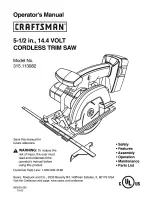
~73~
Access to the telephone network shall occur only if the code transmitted by the
handset matches the code set in the base unit. Similarly, ringing of the handset shall
occur only if the code transmitted by the base unit matches the code set in the
handset. The security code required by this Section may also be employed to
perform other communications functions, such as providing telephone billing
information. This security code system is to operate in accordance with the
following provisions.
(1) There must be provision for at least 256 possible discrete digital codes. Factory -
set codes must be continuously varied over at least 256 possible codes as each
telephone is manufactured. The codes may be varied either randomly, se quentially,
or using another systematic procedure.
(2) Manufacturers must use one of the following approaches for facilitating
variation in the geographic distribution of individual security codes:
(i) Provide a means for the user to readily select from among at least 256 possible
discrete digital codes. The cordless telephone shall be either in a non -operable
mode after manufacture until the user selects a security code or the manufacturer
must continuously vary the initial security code as each telephon e is produced.
(ii) Provide a fixed code that is continuously varied among at least 256 discrete
digital codes as each telephone is manufactured.
(iii) Provide a means for the cordless telephone to automatically select a different
code from among at least 256 possible discrete digital codes each time it is
activated.
(iv) It is permissible to provide combinations of fixed, automatic, and user -
selectable coding provided the above criteria are met.
(3) A statement of the means and procedures used to achieve the required
protection shall be provided in any application for equipment authorization of a
cordless telephone.
Industry Canada Statement:
This device complies with RSS-210 of the Industry Canada Rules. Operation is
subject to the following two conditions:
(1)
This device may not cause harmful interference, and (2) this device must accept
any interference received, including interference that may cause undesired
operation.
Ce dispositif est conforme à la norme CNR-210 d'Industrie Canada applicable aux
appareils radio exempts de licence. Son fonctionnement est sujet aux deux
conditions suivantes: (1) le dispositif ne doit pas produire de brouillage
préjudiciable, et (2) ce dispositif doit accepter tout brouillage reçu, y compris un
brouillage susceptible de provoquer un fonctionnement indésirable.
IMPORTANT NOTE:





































